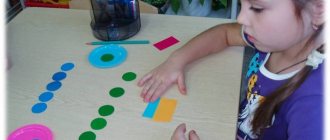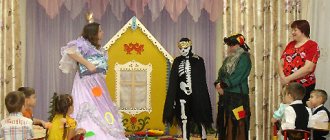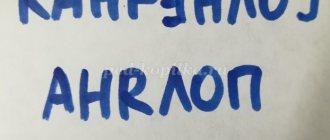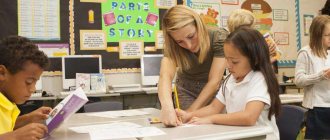In order for a 6-year-old child to develop himself in the field of mathematics, it is necessary to correctly prepare the task for him. Here it would be good to know the child’s temperament and feel his character. You should also be prepared for the fact that you need to start teaching your child from the very basics. It is advisable that a 6-year-old child has already learned to count to 20. And can solve simple mathematical problems with numbers up to 10. The child also needs to develop an understanding of the calculations “addition”, “subtraction”, “more-less-equal”. By age 7, children can already count and compare tens. You can test your child’s knowledge and expand his mathematical knowledge at home; here are examples of tasks in pictures for 6-year-old children in mathematics.
Learning to count
Exact counting: for the child, how many footballs, basketballs, handballs, and tennis balls are there in the picture. And if your son or daughter doesn’t know a certain sport, be sure to tell them and find pictures on this topic. Expand your horizons.
Counting to 20: count from 1 to 20. Say each number out loud and point with your finger to find out where the magic path leads. Look, what number comes after 12? Which one precedes 17? What numbers are between 13 and 16, 17 and 19?
Explain that a number, when written, can have one digit (single digit number) or two digits (double digit number). To learn how to count quickly, you need to learn the names of numbers from 1 to 20 and the names of tens. And in the future, simply add to the tens the numbers already familiar to you from 1 to 9.
It is important, when teaching a child to count to 30 and beyond, to pay attention and correctly name the previous and subsequent numbers in a series.
Counting to 30: count, moving your finger, from 1 to 30. Look, what number comes after 20? What number comes before 28?
Learning tens: when there are few objects, we can count them one by one 1-10. But if there are a lot of objects, it is more convenient to count by tens, which means combining them into groups of 10. If there are 10 apples in a pile, that’s 1 dozen, and if there are 2 times 10 apples, that is, 20 apples are 2 dozen.
Print math tasks: sudoku, mazes, puzzles
Color Sudoku is solved in the same way as number Sudoku, but in this case we use colors. Here are more children's Sudoku without numbers and rules for solving them.
Mazes help develop cognitive abilities of attention. These labyrinths include images related to the sea.
Math puzzles are a way to introduce children to equations and are also great exercises in deduction and logic. Children must determine the value of one of the ice creams using their mental abilities and mathematical logic. More mazes for children.
Solving problems and examples
simple examples of addition in pictures
If your 6-year-old child copes with these tasks easily, gradually make the tasks more difficult. Try subtracting.
Tasks “Connect by numbers and numbers”
One of the biggest benefits of the Number Matching activity is that you can do several things at once. On the one hand, with connect-the-dot drawings, we work on fine motor skills (graphomotor skills), on the other hand, we work on numbers. These activities help children learn to count. When the dots are connected, a shape is formed that can be colored.
Examples in mathematics for children 6 years old
We learn to create examples of addition and subtraction and develop logical thinking and graphic skills. Example cards can be printed.
Quests for smart people
Solve the examples, see where the boy Petya made a mistake, find the wrong answers
The first tasks for those children who have never encountered mathematical problems before in their lives must be given gradually. If your baby doesn’t even know numbers, start classes with tasks for children 3-5 years old. And you need to start with the most basic examples. This can be addition and subtraction within 5. Counting sticks are perfect for this purpose. It is necessary to present the principle of addition and subtraction in such a way that he can understand the basic essence of any mathematical operations.
However, before this, it is very important to teach your child to count to at least 10. If he has not mastered this yet, then it is too early to prepare any math assignments for him. In order for children to learn to count well, as well as subtract and add, you can prepare thematic posters that colorfully depict any objects that are close to their perception. For boys, such objects can be cars, toy soldiers, airplanes, for girls - dolls, elements from dishes, dolls or other things that they often play with.
Tasks for children whose age does not exceed 6 years must be constructed very carefully. Here, in addition to studying mathematical fundamentals, a playful form of mastering the material should also be traced. After all, if mathematics tasks are selected for them in a dry and uninteresting manner, it will be very difficult for young children, given their restlessness, to master the necessary information.
A creative approach from adults when composing mathematical problems for the youngest members of the family can be pictures that depict their children’s favorite cartoon characters. This is how you can interest a child in a math lesson and create an additional incentive for him to comprehend the basics of addition or subtraction. For example, if the picture shows the famous cartoon characters Chip and Dale. And so, through a poster, they set a task for the children: how much will it add up 2 apples that Chip has with 3 apples that Dale has? And children begin to think about how to help their favorite characters resolve their dilemma.
Of course, in order to correctly create a task for children aged 6 years, you need to have not only ingenuity, but also be creative in this matter. But we should not forget that teaching the basics of mathematics to a child is not an easy task, requiring considerable diligence and patience from an adult!
How to conduct classes with a child 6-7 years old
A child in preschool age has great developmental potential and cognitive abilities. Parents simply need to help their child realize his potential. The time spent will definitely pay off. Help from parents can make future schooling enjoyable. And the adults themselves will not be upset about their child’s academic performance.
Activities with preschoolers
Here are a few tips for getting the most out of your workouts:
- Classes shouldn't be boring.
The best motivation for learning is interest. It turns children into creative individuals and provides an opportunity to feel satisfaction from their activities.
- Exercises must be repeated constantly.
Improvement in mental abilities is tested with time and duration of practice. If you cannot complete the exercise, you need to take a break and return to it later. A less complex or equal version of the task will also solve the problem.
- Be patient and take your time. It is unacceptable to offer a child tasks that exceed his real capabilities.
- Insufficient progress in classes, according to adults, should not cause anxiety in parents.
- The duration of lessons should be moderate, exceeding is unacceptable.
Finger gymnastics complex for kindergarten children 4-5 years old
If a child has lost attention due to fatigue, it is recommended to occupy him with other activities. It is necessary to determine the degree of endurance of the baby in order to slightly increase the duration of the lesson each time.
- The game form of learning is best suited for preschoolers.
- It is extremely important to regularly support the child and praise him for his perseverance and efforts. It is not recommended to compare a preschooler with other children. This helps build self-confidence.
On a note! Working with a child is joy and pleasure, not hard work. This is the best opportunity to establish friendships with your child.





